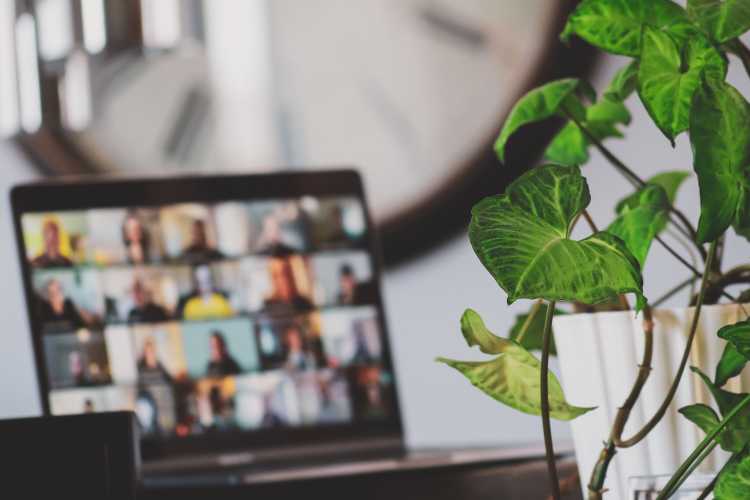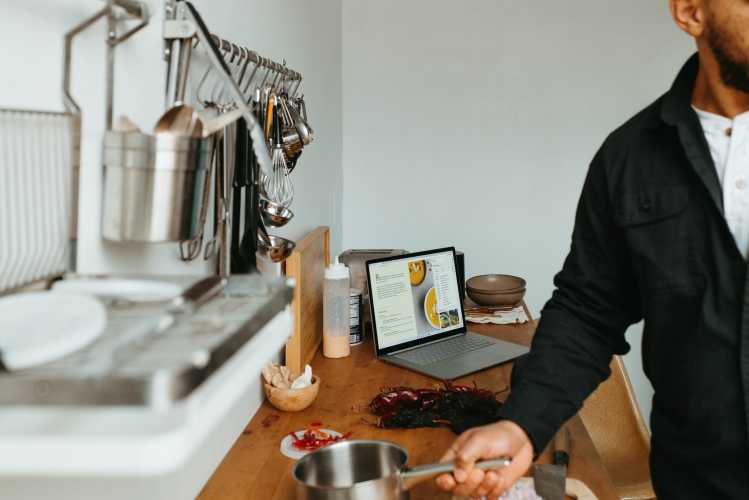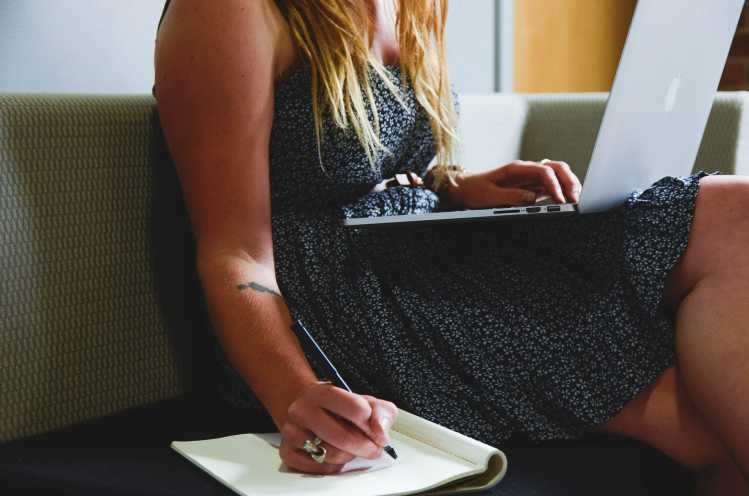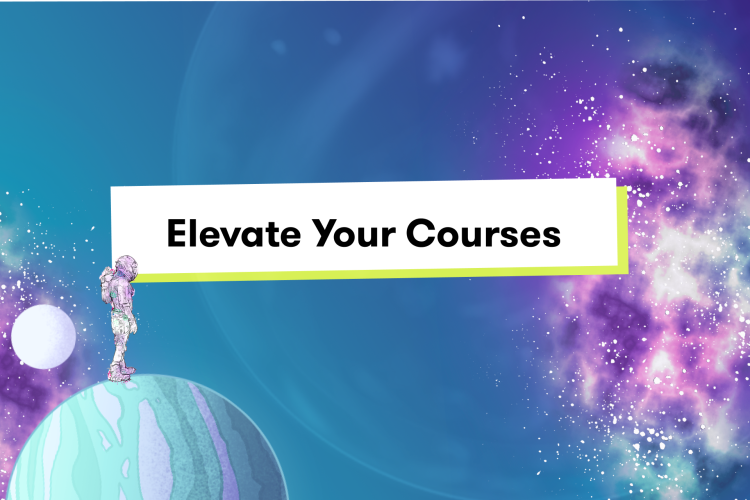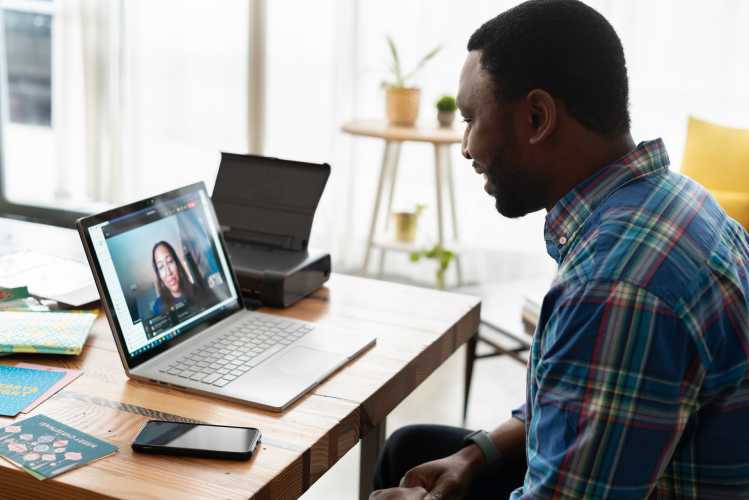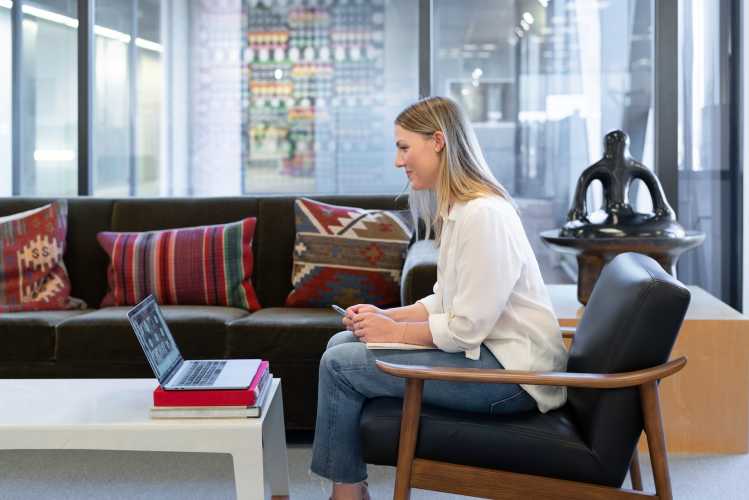Online Courses
Teachable vs. Udemy – Which Is Best in 2025?
If you’re trying to choose between these two online course platforms, we’ll help you pick!
Author
Mighty Team
Last Updated
February 6, 2025

Table of Contents
In this article
There are SO MANY course creation platforms out there, with a new one being created every week. How the heck are you supposed to pick? What if you pick wrong and it hurts your course sales?
In this article, we’re going to take a deep dive into comparing two of the most common course platforms out there: Teachable and Udemy. While they each have different advantages and disadvantages, and neither one does it all.
We'll compare how each ranks for:
Creating, marketing, and selling a course
Pricing and features
Mobile apps and access
Community and engagement.
Try the platform with the most $1 million courses and memberships
Teachable vs. Udemy: Quick Comparison
Teachable | Udemy | |
|---|---|---|
Type | Hosted Platform | Marketplace |
Async LMS | ||
Native Live Teaching | - | - |
Websites | - | |
Discussions | Forum | Basic Q&A |
Communication w/ Students | Integrated Email | Limited to Announcements |
Finding Students | Affiliate Program | Marketplace Listing |
Discussion Format | Main Forum | Each lecture |
Native Video Creation | - | |
Custom Branding | - | |
Apps | iOS Only | |
WordPress Plugin | - | |
Built-In Casting to TV | - | |
Compensation Model | $59/mo + 5% Transaction Fees | Up to 67% Fees |
Requirements for Earning | None | None |
Teachable vs. Udemy: What’s the difference?
Teachable
Teachable is an online course creation platform that gives creators options to build, style, and sell their digital courses. It’s totally self-contained, meaning that you use the site to build and sell YOUR course. Users coming to your page won’t see a bunch of other courses, and you’ll see why that’s important in a minute.
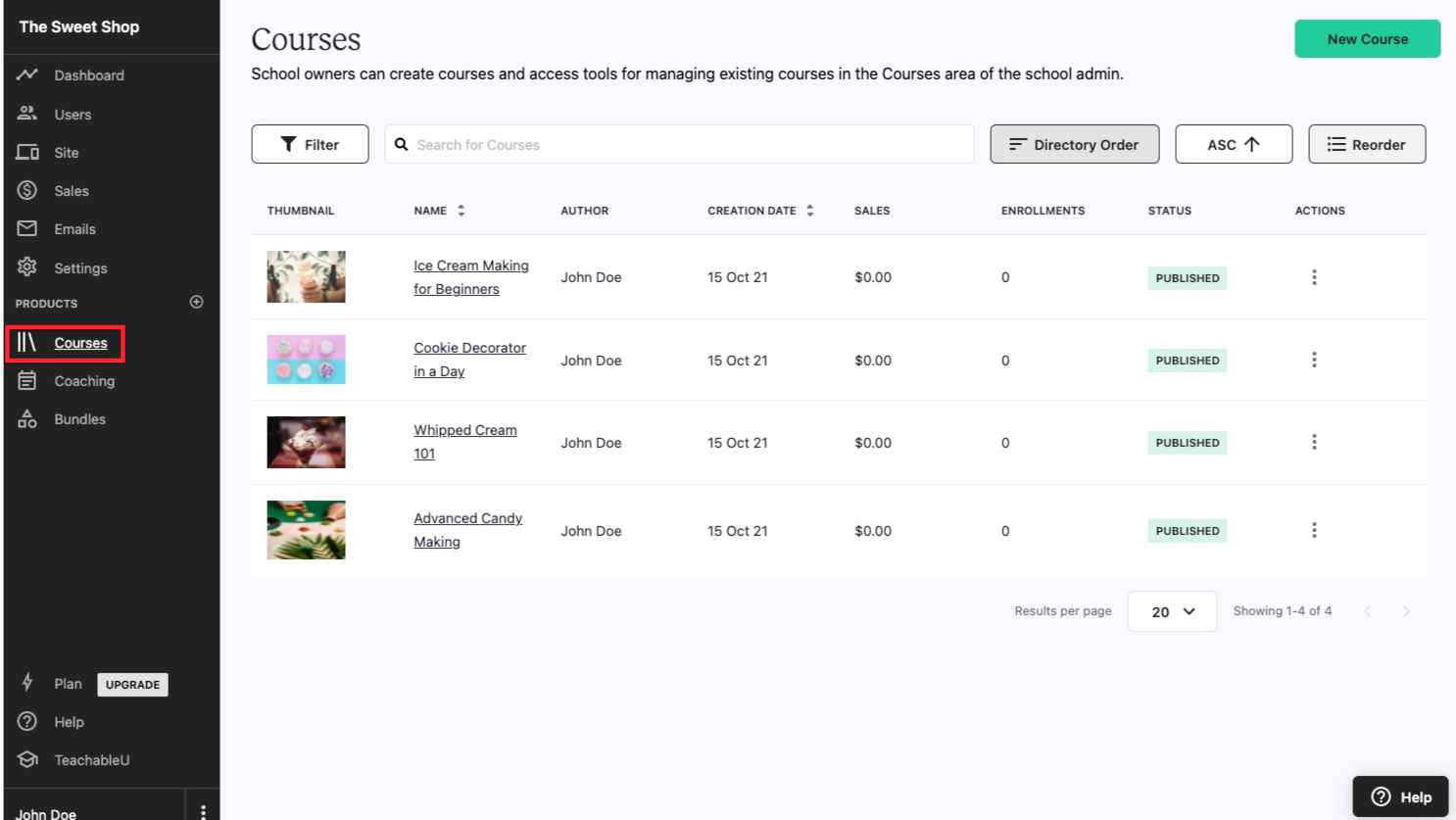
Teachable has quite a few customization features for the look and feel of your course, and you can build supplementary web pages to market it. We’ll get into the details below.
Udemy
Udemy is also an online course creation platform where instructors can create and host an asynchronous digital course.
But unlike Teachable, Udemy is a course marketplace with thousands of courses on it at all different price points–from $0-$199.99. This means that your course lives among many others, which has advantages and disadvantages that we’ll explore.
Teachable vs. Udemy: The Criteria
When you’re trying to build an online course for the first time, it’s a lot to think about. Even if you’re a veteran, you know how much work it can be. If you’re trying to figure out which platform is right for you between Teachable vs. Udemy, here are the criteria we’re judging on.
Creating your course
A great course platform should give you the ability to build a course– duh. But it should also be easy to use and empower you as a creator to bring your vision to life instead of being stuck within the limitations of the platform itself.
Marketing your course
So you’ve built a great course, how do you make sure people see it? Great course platforms don’t just give you a way to build your course, they also help you get it in front of people. Both Teachable and Udemy offer instructors totally different marketing models, and we’ll compare the two.
Selling your course
If you build a course, you need to sell it somehow. A modern course platform should empower you to sell your course to the people who want and need it. A good course sales platform should let you manage sales in multiple currencies if necessary and should let the creator put more back in their pocket at the end of the day.
Pricing and features
Each of these platforms costs something. Even if they’re “free,” the platform will take something off of your sales to compensate for the work they do in keeping it online. We’ll compare the pricing and features of the plans.
Mobile apps
Once you’ve built your course, can users access it across platforms on responsive apps so that they can learn on the go?
Building community
So many people will start an online course and never finish it. That’s where a great community comes in. Can instructors build a community around the course, bringing fellow learners together and thus giving them a WAY HIGHER chance of success?
We’ll compare both Teachable and Udemy under each of these criteria in the following sections.
Teachable vs. Udemy
Creating your course
Teachable
Teachable has a whole set of course-building tools that work well for instructors. It gives you powerful editing software with a responsive feel that lets you create video lectures and even stream live coaching. It’s also got a set of features that help you evaluate what users have learned, including good quiz capabilities and a whole bunch of integration options for other software.
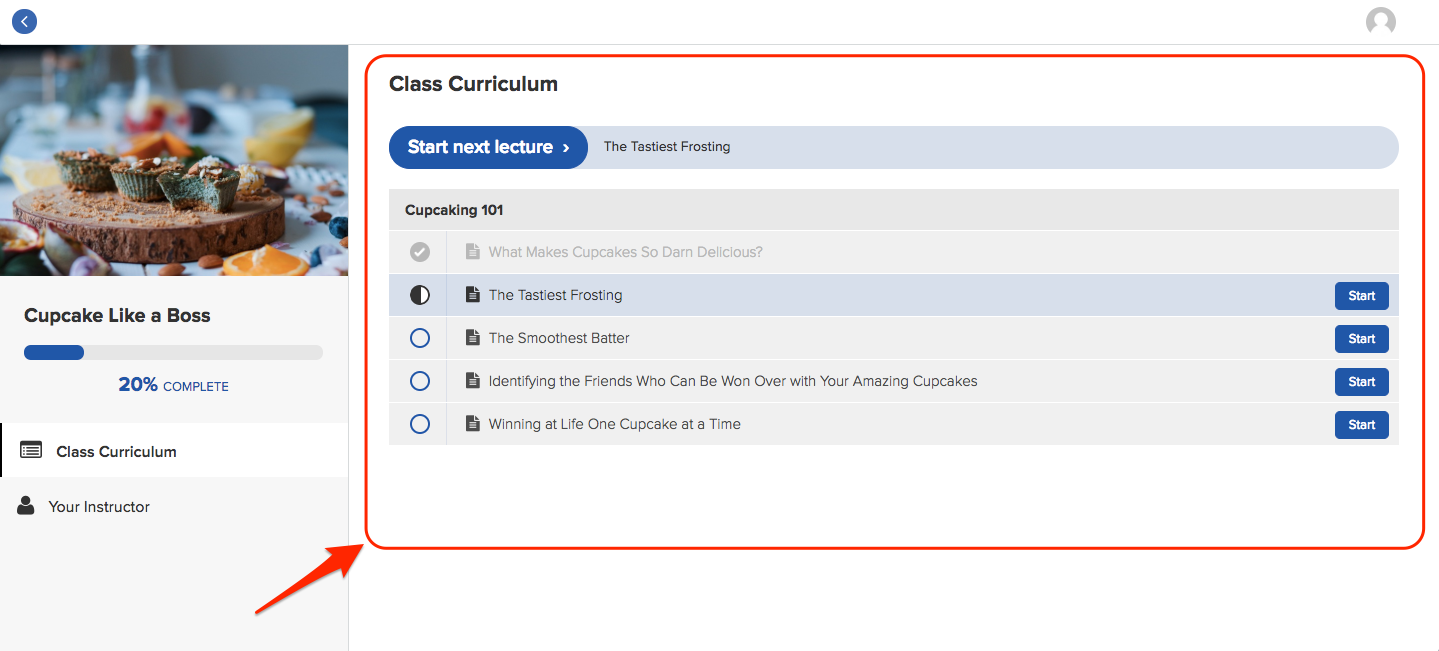
Teachable is probably the better of the two when it comes to building your own brand into your course. While Udemy might give you some more flexibility in how your course is actually delivered (more on this in a second), Teachable gives you more design options, including a whole set of different templates and colors, options to have your own domain name, and a lot of flexibility over your course pages and even your checkout. Udemy doesn’t really do this.
Udemy
Udemy allows you to deliver your course in a bunch of different ways that can include video, audio, and text. The ability to be flexible in the type of course you can create is great since students all learn differently!

It also gives you a lot of good options for supporting your courses with quizzes, Q&As, and reviews–maybe even more than Teachable. But it doesn’t give you the customizable branding options you get with Teachable. The reason you get less customization is that your course has to fit in the Udemy marketplace–which we’ll talk about next.
Marketing your course
When it comes to marketing your course and getting it in front of potential users, both Teachable and Udemy have some good features. But it’s also here that the differences between the two really show up.
Teachable
Teachable is a place where you create your own course. They host it, but when users come, they’re seeing your course only. This has pros and cons depending on what you want from your course. Unlike Udemy, there’s no marketplace of potential learners who might stumble on your product. But there are also no distractions either. And if you’ve got a following of people who want to buy your course, or you can take care of the marketing yourself, Teachable probably works.
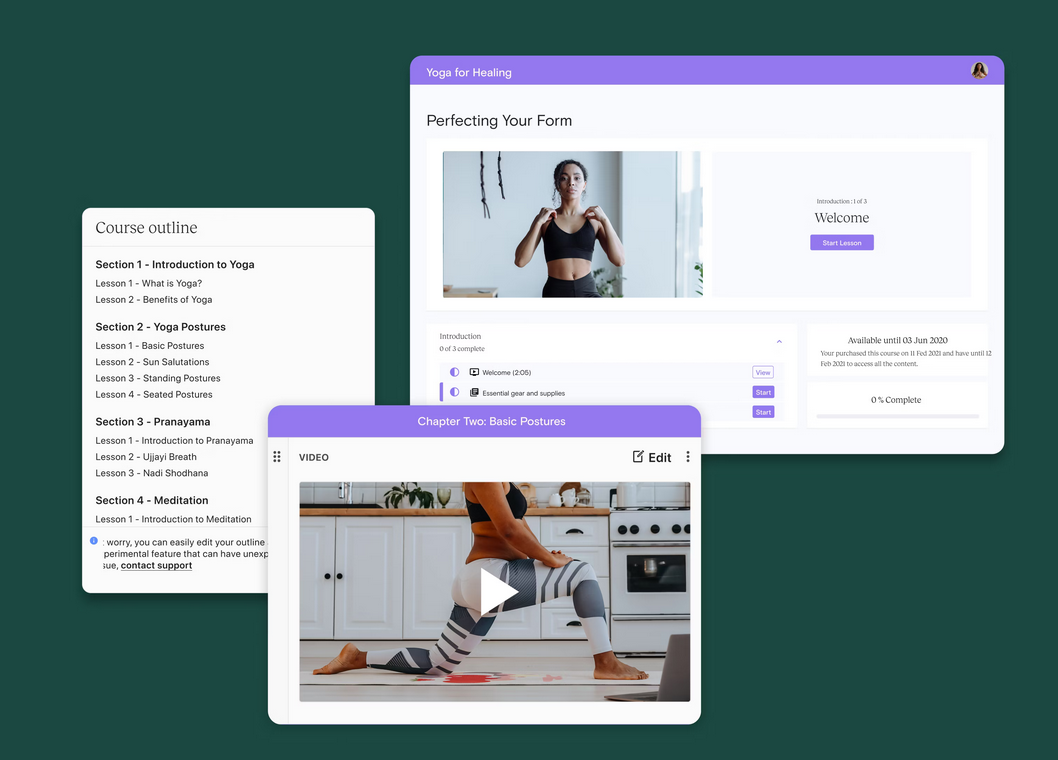
We talked about custom branding above, and that does extend to more options when it comes to creating your sales process: Teachable does give you the option to create some elegant sales pages to sell your course.
One of the best things about Teachable in terms of marketing is probably its affiliate program feature. What this means is that you can basically empower people to sell your course for you as “affiliates,” and give them a share of the revenue that they bring in. This can be a no-brainer for course creators since you could build relationships with some micro-influencers in your niche, give them a preview, and enlist them and their audiences to sell the course. It gives you customers you probably wouldn’t otherwise have, so even if you end up paying them 30-50% of your course sale revenue, you’re probably coming out on top.
Udemy
Udemy gives you a very different marketing model from Teachable, but it can work too. Instead of just marketing your course, Udemy gives users a marketplace of willing buyers looking for the right course. If you don’t have an existing audience, or if you don’t want to spend too much time marketing or building relationships with influencers, this might be a better fit for you.
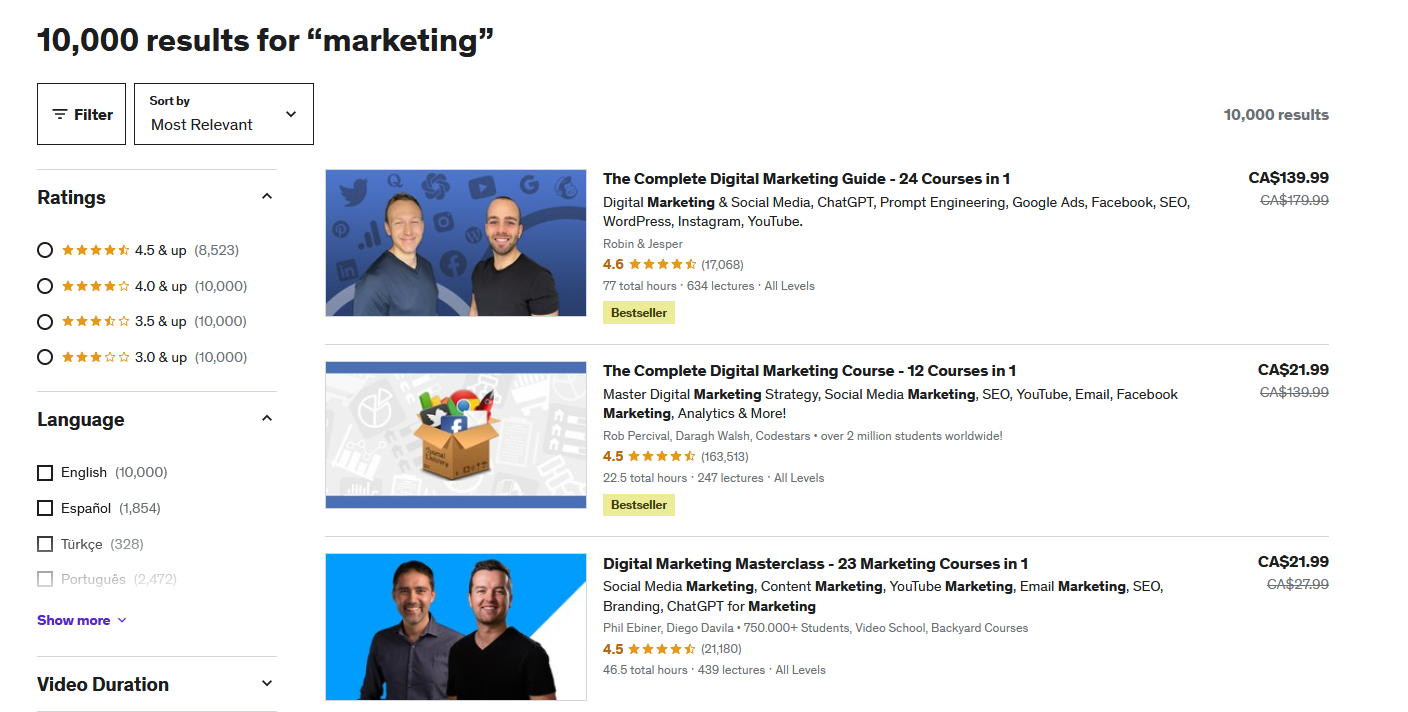
You keep most of the revenue from the students you bring to the platform through your promotions and links, while Udemy keeps most of the revenue from students it finds for you. But since these are sales you wouldn’t otherwise have, it might be a win-win.
In effect, these platforms are similar in that each might require you to give up some of your revenue to make sales, either you pay Udemy their finder's fee or you pay affiliates on Teachable. Some people might be okay with this tradeoff, and some might prefer to keep all of their revenue. If this is you, you might want to choose another platform altogether–especially if you don’t mind marketing your course yourself.
Read More: The Best Online Course Platforms
Selling your course
When it comes time to actually sell your course, both Udemy and Teachable have very different sales and revenue models for creators. Both give you the option to charge in multiple currencies and serve audiences around the world. Here are a few of the differences:
Teachable
Teachable lets you keep pretty much all of your revenue, with one catch. It depends on which plan you choose. If you choose the “free” plan, you’ll end up paying out $1 + 10% of each transaction–so if you sold a $20 course, you’d pay Teachable $2 a sale. That means that the plan isn’t free. While it might be great for testing a product before paying the $24/mo for the basic plan, if you sell more than 10 courses a month you’d want to pay for the upgrade and keep more of your money.
While we talked about the value of the ability to create an affiliate program above, this is only available on the premium plans–more on this below.
Udemy
Udemy is “free” to create and host your course, but there’s a catch here too. Unlike charging you a flat fee, which Teachable does on its paid plans, Udemy keeps a portion of your sales. The good news is that when you bring users to the site, Udemy lets you keep 97% of those sales. So, if you sold a course for $20, and someone bought it through a link you share in an email, you’d keep $19.40–which is respectable.
A bigger chunk of your revenue disappears when you have students who discover and purchase your course in Udemy’s library. In this case, Udemy lets the instructor keep 37% of the course price. So, for your $20 course, Udemy would let you keep $7.40. It would take the other $12.60. You might see this as annoying, or you might be thankful to get the revenue you might not otherwise get. It probably depends on how big your audience is and how good you are at driving your own customers to the platform.
Pricing and features
Teachable
We already talked about the fact that Teachable has a “free” plan in which you actually just pay by the sale instead of a flat rate. This might be good for beginners who are trying to test the waters of online course sales. And honestly, not every course is a blockbuster. So maybe the pay-per-sale would work well for teachers who don’t sell a lot.
But as soon as you’ve seen a bit of success, you’re going to want to pay for a plan. While there is a $29/mo plan, unfortunately, most of the great features we covered above come on the Pro plan, which costs $90/mo. This includes the ability to brand your own course, add on advanced learning features like quizzes, and–most notably of all–create your own affiliate program. That’s right, the affiliate program is a huge draw for some creators who want to enlist the help of others in their niche to sell their courses, but you need the Pro plan to access it.
Compared to other white-label course platforms, Teachable is expensive for what you can do with it. Mighty Networks has similar pricing, but that number includes a full, robust online community platform, native live streaming and video, chat and messaging features, event and Zoom options, and more. And it does everything on the course creation side that Teachable does.
Teachable really just lets you create and sell a course. If you wanted to do any of these other things, you’d have to pay for other software separately and integrate it.
Udemy
There’s not much to say about Udemy’s pricing and features, because we’ve already covered it. They don’t have different plans. It’s free to create and host a course on Udemy, but you pay a portion of your sales back to the platform.
Mobile apps & access
A modern course platform should include different ways to access courses, especially robust mobile apps. Here’s how these two compare:
Teachable

Teachable has an iOS app in the app store. But the app isn’t as interactive as the online web app. Surprisingly, Teachable doesn’t have an Android app yet. This is a serious limitation that will affect, well, half of your students. It’s a huge value add if people can take the course with them anywhere, and Teachable limits you on this front.
Udemy
Udemy does much better than Teachable on the mobile apps and access side, with a good mobile app that can be found in both the iOS and the Google Play store. The apps also let students download course content and access it offline, which is a big plus for those trying to learn on the go with limited mobile data. One other cool thing is that the app can stream to either a Chromecast or Apple TV.
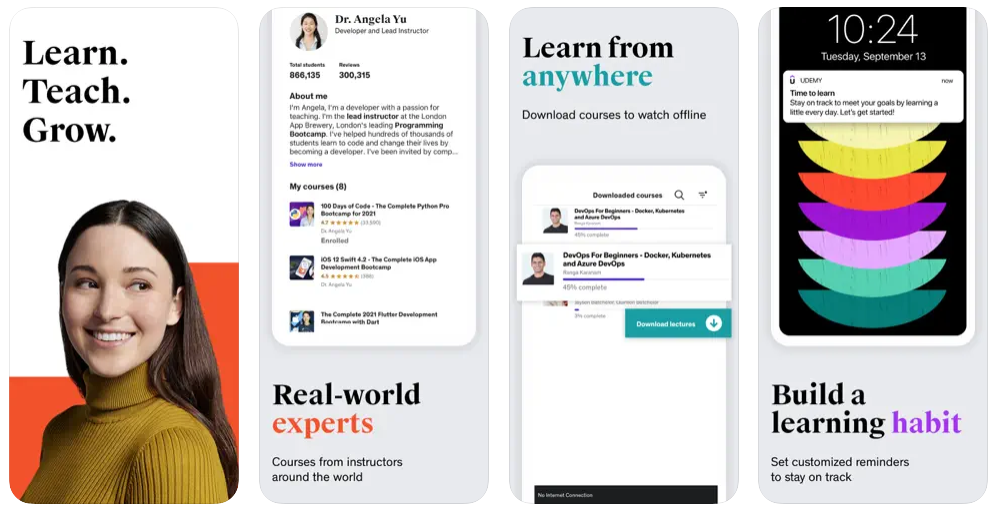
Both the Teachable and the Udemy apps are NOT made to build content on. They’re not really functional for teachers. They’re made for students to consume the content and not much more than that. This is a drawback to both platforms, since more and more teachers want to use their smartphones to create too–everything from teaching live lessons to engaging with students. These apps don’t really give that functionality.
Community
Last, but definitely not least, we’re comparing how Teachable and Udemy rank when it comes to building a community around your course. And… drumroll… there’s really not much to compare here. The community-building features are extremely limited on both platforms, and most people who create courses choose to build communities on different platforms.
This is a huge strike against both Teachable and Udemy, since you can get other platforms for the same price with features that let you build a dynamic support community around your course.
Teachable vs. Udemy: Which one is best?
Between Teachable and Udemy, the one that’s best will depend on what you want to do with it. Each has different features that might be better for some users than others. Here are the highlights of each:
Teachable
High level of customization
More flexibility in reflecting your own brand (from landing pages to checkout)
Affiliate program (Pro plan)
Udemy
Course marketplace with thousands of potential students
Keep almost all of the revenue you bring in and get bonus customers too
Better apps and access options
Conclusion
Ok, let’s finish with this. In the battle of Teachable vs. Udemy, there might be another contender. You’ve landed on our website, after all, so let us tell you a bit about ourselves.
Mighty Networks is brings together courses, content, community, and commerce. It's used by brands and figures like Tony Robbins, Mel Robbins, Gary Vaynerchuck, Marie Forleo, TED, and Jim Kwik.

We’ve created a beautiful, engaging course platform that does pretty much everything Teachable and Udemy do and then some. You can design amazing courses, build awesome communities around them, and watch as your audience grows.

But Mighty goes further, giving you the option to customize flexible course Spaces with features like live streaming, live events, community forums, messaging and chat, and member profiles. All under your own brand, on both desktop and mobile.

So before you go, why not start playing around to see what you could build with us? It’s absolutely free to start. And no, we don’t want your credit card before you can try it.
Ready to start building your online course and community?
Ready to start building your community?
Start a free 14-day trial to explore Mighty—no credit card required.
More like this
Join Mighty Community
Learn the principles of Community Design™ (and see them in action) alongside thousands of creators and entrepreneurs. It's free to join!

Online Courses
Creating a Course
Teaching a Course
Course Platforms
Selling a Course
Communities & Memberships
Community Platforms
Managing a Community
Building a Community
Growing a Community
Monetizing a Community
Content Creation
Creators & Entrepreneurs
Monetization
Content Creation
Starting a Business
Website Builders
Creating & Managing a Website
Events
Event Platforms
Hosting & Marketing Events
Branded Apps
Creating a Mobile App
Coaching Apps
Community Apps
Coaching
Mastermind Groups
Starting a Coaching Business
Coaching Platforms
Filter by Category
Online Courses
Communities & Memberships
Creators & Entrepreneurs
Events
Branded Apps
Coaching
Build a $1 Million Community
This free masterclass went viral—sign up to learn why.







